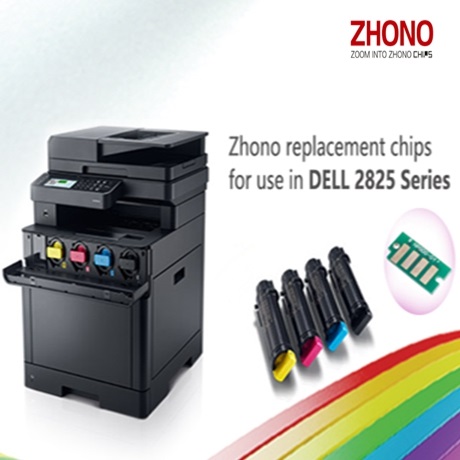A Review on the Print Aftermarket in Asia Pacific
 by Pankaj Chawla, Research Manager with IDC’s Asia/Pacific Peripherals Group
by Pankaj Chawla, Research Manager with IDC’s Asia/Pacific Peripherals Group
Background
Over the last 2 years 6.5 million inkjet and laser printers were shipped to the Asia Pacific market, excluding Japan (APeJ), on a quarterly basis. While some other world markets have witnessed a decline, the APeJ market has seen steady growth in the number of printers shipped.
High Installed Base But Low Page Volume
With the resulting growth in the installed base of printers, the APeJ region offers huge opportunities for OEMs and aftermarket players in the sale of consumables. At the same time, however, this market presents many challenges. Most of the nations in the region are either developing or developed markets. Small and medium scale enterprises—which constitute the key driver of the economy in the region—are not able to afford high priced toners. As a result page volume overall is lower as compared to developed markets elsewhere.
Obstacles Facing Third Party Vendors
Third party vendors are capitalizing on the opportunity by offering refilled toner cartridges. However, there are many obstacles which remanufacturers must face. Toner powder and replaceable cartridge components are not readily available; as a result the quality of remanufactured products is low compared to OEM carts. Reusing the OPC drum, for example, is causing print quality defects. Many other components that wear out during the printing process are also not readily available and as a result third party vendors are not able to match the top level of print quality offered by the OEMs.
Because every toner cartridge has a life cycle (typically, from 2 to 5 remans) the availability of empty toner cartridges presents another challenge. Additionally, OEMs have launched their own empty collection programs making it tough for third party vendors to round up spent cartridges. Low cost compatibles from third party sources make them an attractive proposition in the market. But, while the third party market has recorded growth in the region there is a ceiling, which third party vendors could not penetrate.
Impact of Compatible Toner Cartridges
Compatible toner cartridges, built from scratch, have reduced the dependency on collecting spent toner cartridges. The APeJ market witnessed the emergence of compatible toner cartridges starting in 2010. Compatible toner cartridges are a cheaper and more cost-effective alternative to spent OEM cartridges and at the same time they are readily available and user friendly. End users can buy them to replace their cartridges easily. Manufacturers from the PRC (People’s Republic of China) have ramped up their production capabilities, enabling them to lower the cost of compatible cartridges. Channels have found it an attractive business proposition because of higher margins and lower investment costs. In the last 4 years the market has witnessed strong growth in the shipment of compatible cartridges. This has not only fueled shipment of printer supplies but also played an important role in incremental growth in printer shipment and also growth in page volume as cheaper toner cartridges reduce the cost of printing.
MPS Enhances Compatible Use
On the one hand, low-priced compatible cartridges have helped channel partners to score higher sales. On the other hand, partners engaged in the business of aftermarket supplies have changed their business model. These players came up with managed print services (MPS) and a cost per page (CPP) program. In both models the service provider is responsible for providing printers, supplies, maintenance and service of the fleet. Players engaged in this business found compatible products attractive because of their low price, ease of use, unlimited availability and reliability.
Digitalization: A Reduction in Stored Paper Files
Although compatible vendors have recorded continuous, sustained growth in the APeJ market, the challenges they face are also growing. With expanded shipments of smartphones and tablets, the demand for consumables is expected to have an impact particularly in developed markets like Australia, Hong Kong and Singapore.
However, governments in most of the Asian countries are undergoing a digital transition. In some countries like Australia, the government has announced they will accept only digitally created records from 2015 onwards. Recently, the Indian government also launched a cleanliness drive in which various ministries destroyed thousands of their retained files. Other countries are following suit and investing in digitalization.
The Road Ahead
In summary, four emerging trends exist today in the APeJ print market that will affect the path forward: Green, Color, MPS and Cloud
Green. OEMs are launching energy efficient printers, promoting efficient printing, and launching recycling programs that advocate green printing. Third party vendors are also increasing the biocontent of their toners to enhance their acceptability and encourage government support. Vendors in the business of remanufacturing always use the Green tag to promote their products.
Color. OEMs, as well as third party vendors, are also focusing on color toners. Most of the consumers using color printers prefer to use OEM consumables because of quality issues while at the same time they seek economical alternatives. This offers an opportunity for third party vendors to increase their revenue; they are actively attempting to take advantage of this opportunity.
Managed Print Services. MPS is another emerging trend as most of the users look to reduce their capital expenditure. MPS is an excellent solution to achieve that goal. Original vendors are coming up with solutions to increase their MPS portfolio. Third party vendors are also coming up with basic MPS solutions targeting small and medium businesses (SMBs).
Cloud Printing. With an increase in the mobile work force, digitalization and increased penetration of smartphones, tablets and BYODs (bring your own devices), adoption of cloud printing, is also growing. Cloud printing is helping businesses cut their cost as it reduces the paper consumption.
 Pankaj Chawla will present at the RT Imaging Summit Zhuhai @2014 on October 15, 2014 in Zhuhai, China.
Pankaj Chawla will present at the RT Imaging Summit Zhuhai @2014 on October 15, 2014 in Zhuhai, China.
Don’t miss out the annual imaging gathering.
Registration Fees: USD $199 per person (including lunch and tea break)
Early Bird Discount: USD $149 per person (including lunch and tea break)
*Get the early bird discount by pre-registering before September 19th, 2014.
Contact: Victoria.Zhao@irecyclingtimes.com


Leave a Comment
Want to join the discussion?Feel free to contribute!